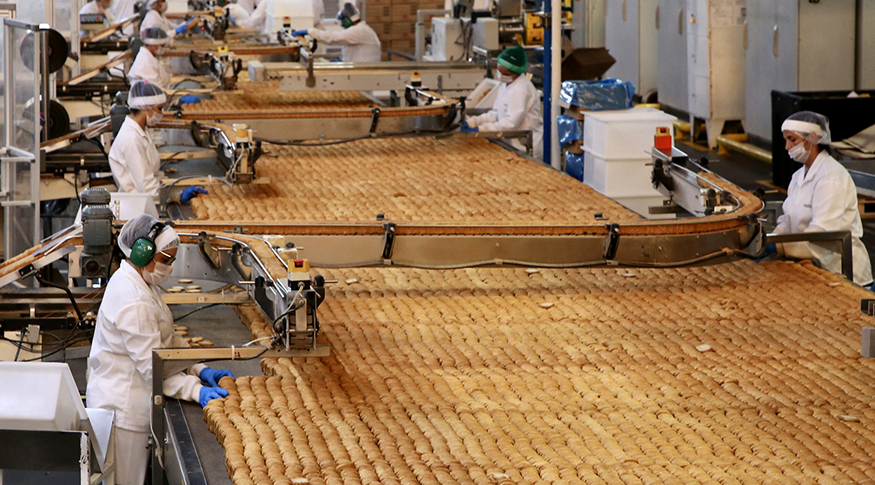Annual Survey of Industry
After four years of decrease, employment in industry increased 0.7% in 2018
June 18, 2020 10h00 AM | Last Updated: June 23, 2020 02h57 AM

The number of persons employed in Brazilian industry increased by about 0.7% from 2017 to 2018, the biggest increase since 2013. Mining and quarrying industries increased in relevance in terms of the generation of the total value of industry by 1.2 percentage points, reaching 14.7% of participation, the highest index in the series. These are some of the data in the Annual Survey of Industry (PIA) 2018, released today by (18) the IBGE, which also had a record decrease in market concentration.
After four decreases in a row, employment in industry gave signs of recovery in 2018. Between December 2017 and December 2018, a total 50 thousand new job posts were created. As a result, the number of industry workers changed to 7,698,689, being below the number registered in 2009. Between 2013 and 2017, about 1,4 million workers left positions in the industrial sector.
The increase in the number of employed persons was observed in manufacturing industry (0.68%), which is also employing most people in industry (97.56%). The mining and quarrying sector recorded a decrease in this respect (-0.39%).
Nevertheless, mining and quarrying industries have expanded their participation regarding relevance in the generation of the total value of industry. Although there was reduction in this respect in 2015 and 2016, its importance increased in 2017 and 2018 and, since 2009, there has been a hike of 5.1 percentage points in participation, with a change from 9.6% to 14.7% in the period.
“A major advance in the petroleum sector took place quite recently, with the exploration of pre-salt reserves", says the survey manager Synthia Santana.
Manufacture of motor vehicles, trailers and bodies recorded registered a decrease in dynamism regarding relevance to value added, having decreased two positions in the ranking of biggest participations in value of manufacturing (from the 3rd to the 5th position). With a steep decrease (3.8 p.p.) between 2009 and 2018, and reaching 7.4% of the value added of Manufacturing Industry, the activity registered the biggest reduction in the ten-year period among all the industrial sectors.
“Industry has gone through successive crises. In the first place, in the financial crisis of 2008 all the countries recorded significant drops, so the Brazilian economy was affected, especially in those sectors that depend on the foreign sector. To stop the crisis contracyclical policies were adopted; the idea was to make up for that effect (such as the reduction of Excise Tax), but, between 2014 and 2015, we had an important domestic crisis, and there was not enough time for industry to recover from the previous impact”, Synthia recalls.
In the ranking of industrial activities regarding volume of sales, extraction of petroleum and natural gas gained five positions, from the 11th to 2017 to the 6th, in 2018. On the contrary, manufacture of motor vehicles fell by one position; now, manufacture of coke, petroleum products and biofuels is in the 3rd position.
Market concentration in industry reaches record level
The survey also showed that market concentration in the Brazilian industrial sector increased 2.9 percentage points in 2018, reaching 24.2%, the highest level in the series initiated in 2009. The index measures the value of manufacturing generated by the eight biggest companies in the sector.
Between 2009 and 2018, both mining and quarrying industry and manufacturing industry recorded an increase in concentration, from 67.7% to 74.0% and from 20.4% to 22.3%, respectively.
In Mining and quarrying insignificant decrease in concentration: from 98.8% in 2009 to 88.8% in 2018. The other segments that form the sector were either more concentrated or at the same initial level. Only Extraction of non-metallic minerals, which includes the extraction of sand, clay and salt, had concentration below 50% in 2018 (20.1%).
Considering Manufacturing Industry, only five of its 24 segments recorded a concentration index above 50%, with a highlight to Manufacture of coke, petroleum and biofuels (93.1%). The biggest increase in concentration was registered by Manufacture of pulp, paper and paper products, with a change from 44.8% in 2009 to 61.0% in 2018. And the activity recording the biggest decrease was Manufacture of motor vehicles, trailers and bodies, which fell from 48.0% to 37.5% in the same period.




















